- 9 min to read
20 Awesome WordPress Alternatives in 2021: Which one to use?
Self-hosted CMS platforms, blogging platforms, eCommerce, and website builders. Let’s explore the best WordPress alternatives in 2021 and why you might want to use them.
Being an all-in-one platform, WordPress has its pros and cons. Two years ago I wrote about it here (oddly enough some of the points still stand). Besides the post being more of a case in point for static site generators and Jamstack than a showcase of the best WordPress alternative options available, a lot has happened in the world of WordPress and web dev in general since then.
For one, an impressive range of solutions to go headless with WordPress is adding up a lot to an already versatile platform. And I’m talking here about WP in-house work as well as the adoption of headless WP approach from, why not, static site generators like Gatsby.
For two, fully managed headless WP services are already an industry.
For three, the abundance of available website building solutions. While it makes choosing so much harder, it is actually a good thing. A competitive climate creates better products for the end-users. In 2021 there’s an array of options, good WordPress alternatives on the market, made to fit certain roles/needs/businesses.
With all this in mind, this time, I’ve made a list of the best WordPress alternatives available on the market to help you understand their strengths and weaknesses and then decide which one may be the best option for you and your business.
Join our newsletter today!
And receive valuable, in-depth Jamstack & web. dev tips, tricks, and case studies.
Self-Hosted CMS WordPress Alternatives
Ghost
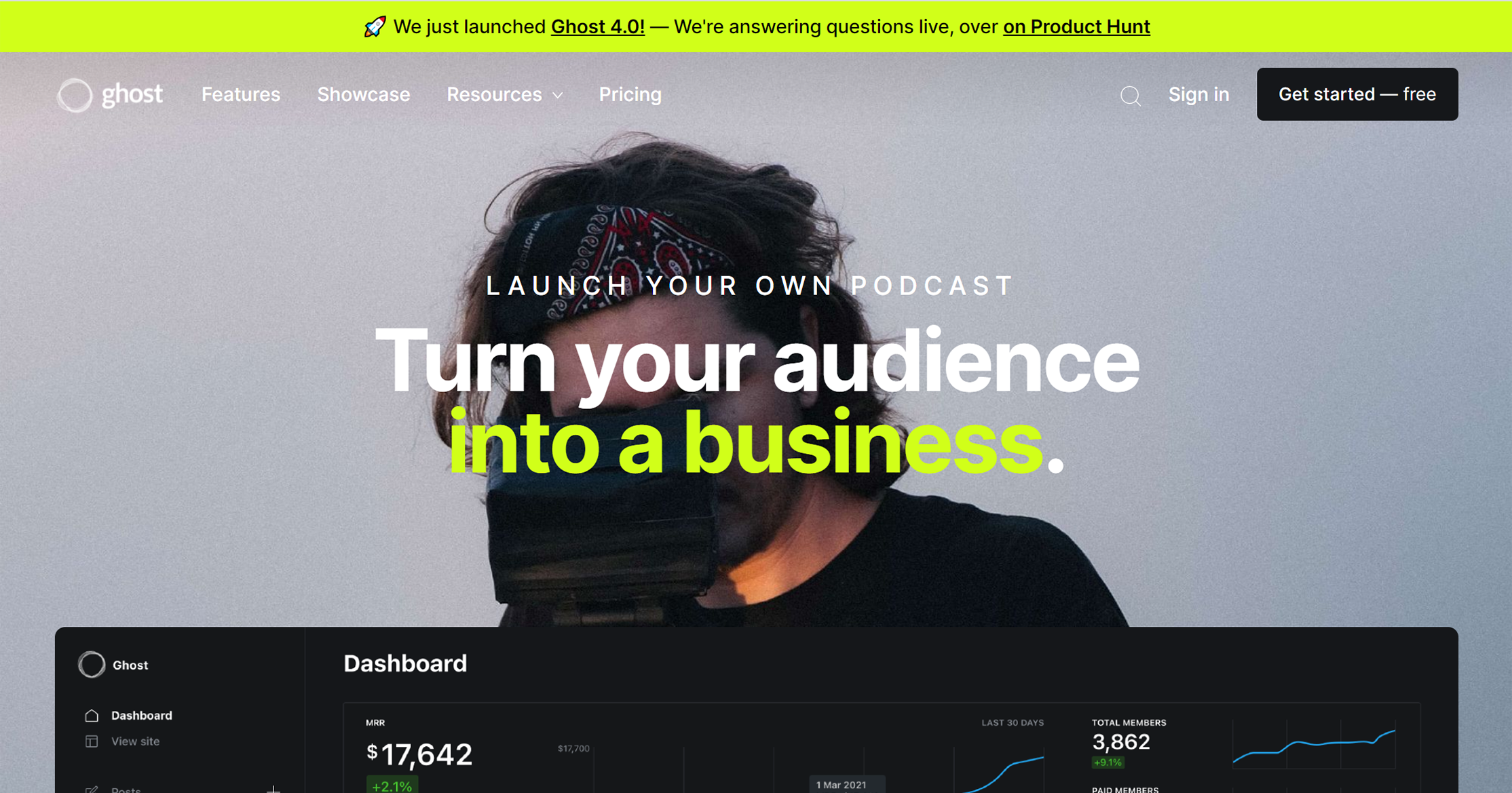
To put it as simply as possible Ghost is an open-source blogging platform written in Node.js. Think of it as WordPress of old with all the blog functionality but no ecommerce as we explained it in our self-hosted CMSs in Jamstack post.
However, with the recent release of Ghost 4.0, it has truly become an amazing full-featured publishing platform. By being focused on one type of website it is, in some way, a much much better solution than WordPress.
I mean, a new dashboard with detailed analytics; membership, subscriptions, and even an email newsletter option as a native part of the core platform; and major refactoring of the codebase that improved overall performance (on top of automatic responsive and lazy-loading images) sets Ghosts as #1 contender in the blogging sphere.
Some big names like Buffer, Unsplash, and DuckDuckGoGo for example, use it as their blog solution.
Drupal
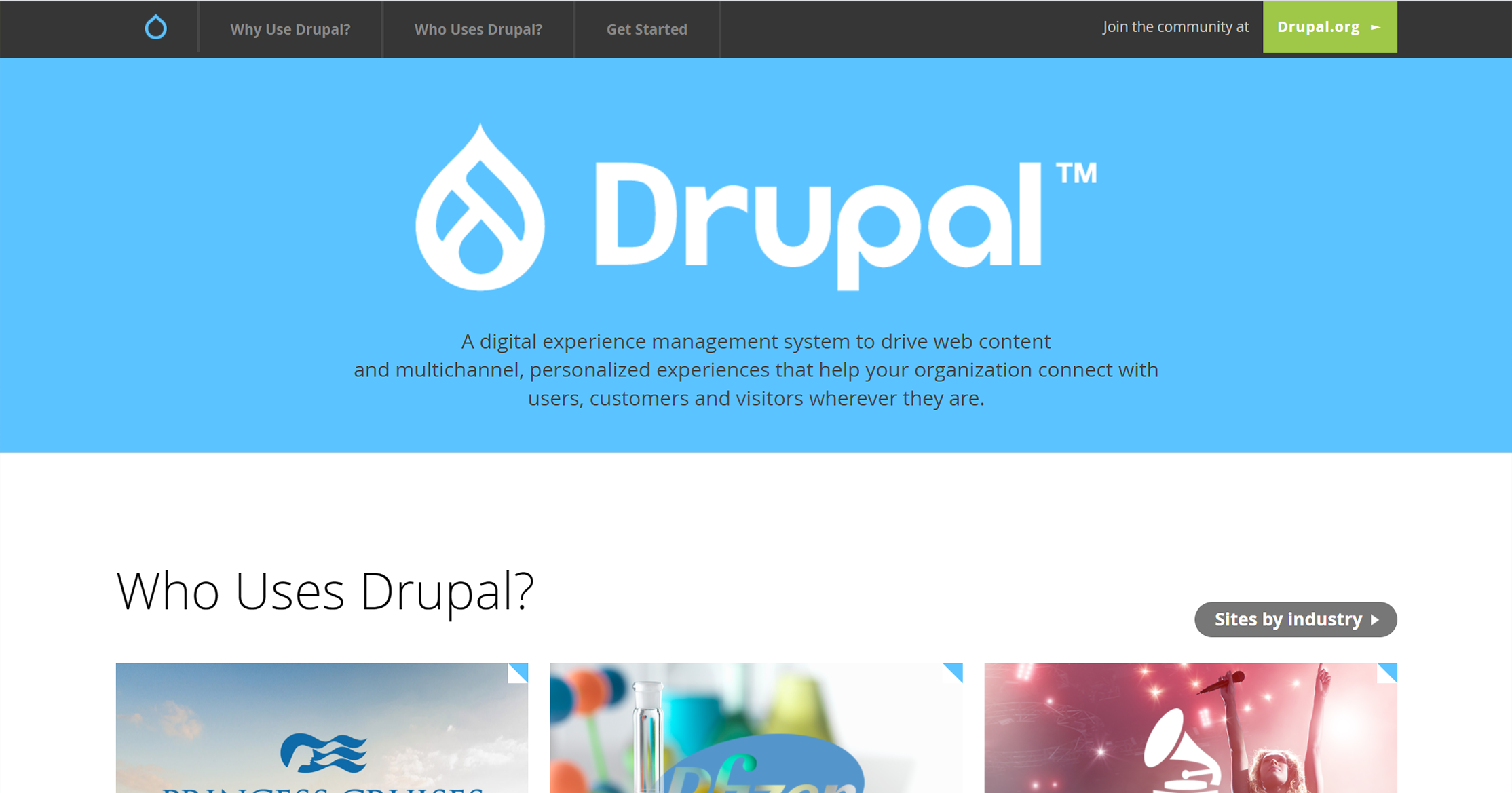
You can’t mention WordPress without mentioning Drupal and vice versa. Not only they were released just a few years apart (Drupal in 2000, WordPress in 2003) but they have a lot of similarities as well. For one, they both are free to use open-source CMSs. For two they both have a wide range of plugins and modules for additional functionality, For three, incredible communities are backing both of them.
Of course, there are differences, most notably the level of complexity Drupal brings with it and a fairly steep learning curve compared to the ease of use WordPress has. At the same time, that same complexity allows much more in terms of customization and website architecture/template flexibility. For example, if you need multiple page templates in one project, Drupal might be better equipped to handle your needs than WordPress.
Drupal is best known for its strong infrastructure and ability to handle large quantities of client data, which is why it’s recommended for large companies. Because of this, it’s often used for university websites, government departments, large enterprise websites, etc. For example, Drupal powers the White House website, as well as The Economist.
Drupal is great for projects that are too complex for WordPress to handle. I’d dare to say that it is a more dev-oriented or dev-dependent platform than WordPress. After all, it is designed by the devs for the devs and that in itself is both a strength and a weakness.
Strapi
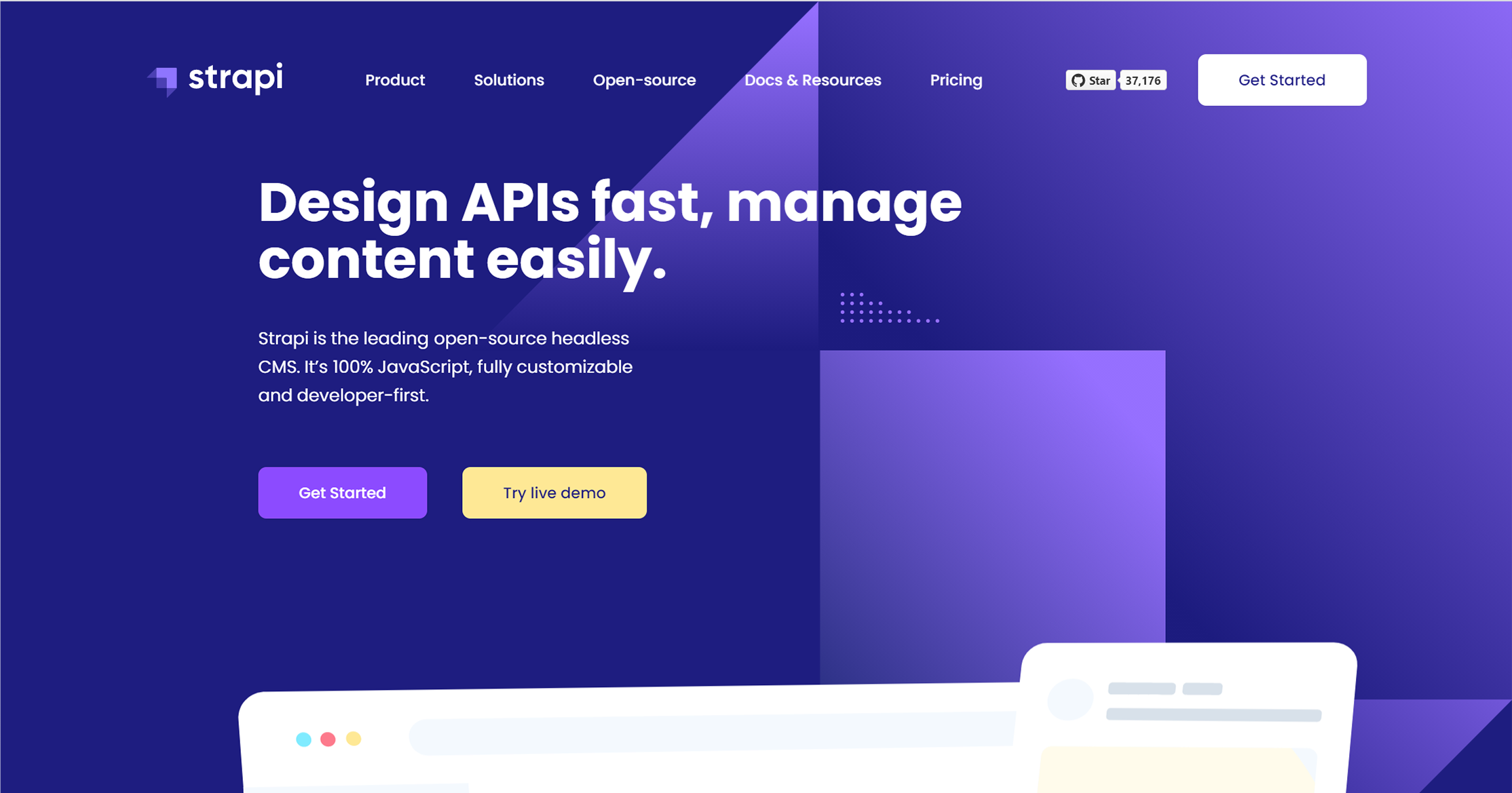
The trend of using headless CMSs or any CMS in a headless manner is on the rise. There are a plethora of options right now. We've covered, talked about, the ones we worked with, in our headless CMS post.
One of those is Strapi an open-source, JavaScript, headless CMS based on Node.js. What sets it apart from the lot is the ability to host it on your own server and a growing community around plugins that are made for additional functionalities (similar to WordPress). Take a look at our in-depth review of Strapi as a headless CMSfollowing the link above.
Other options: Django CMS, Joomla.
Website Builders
Stackbit
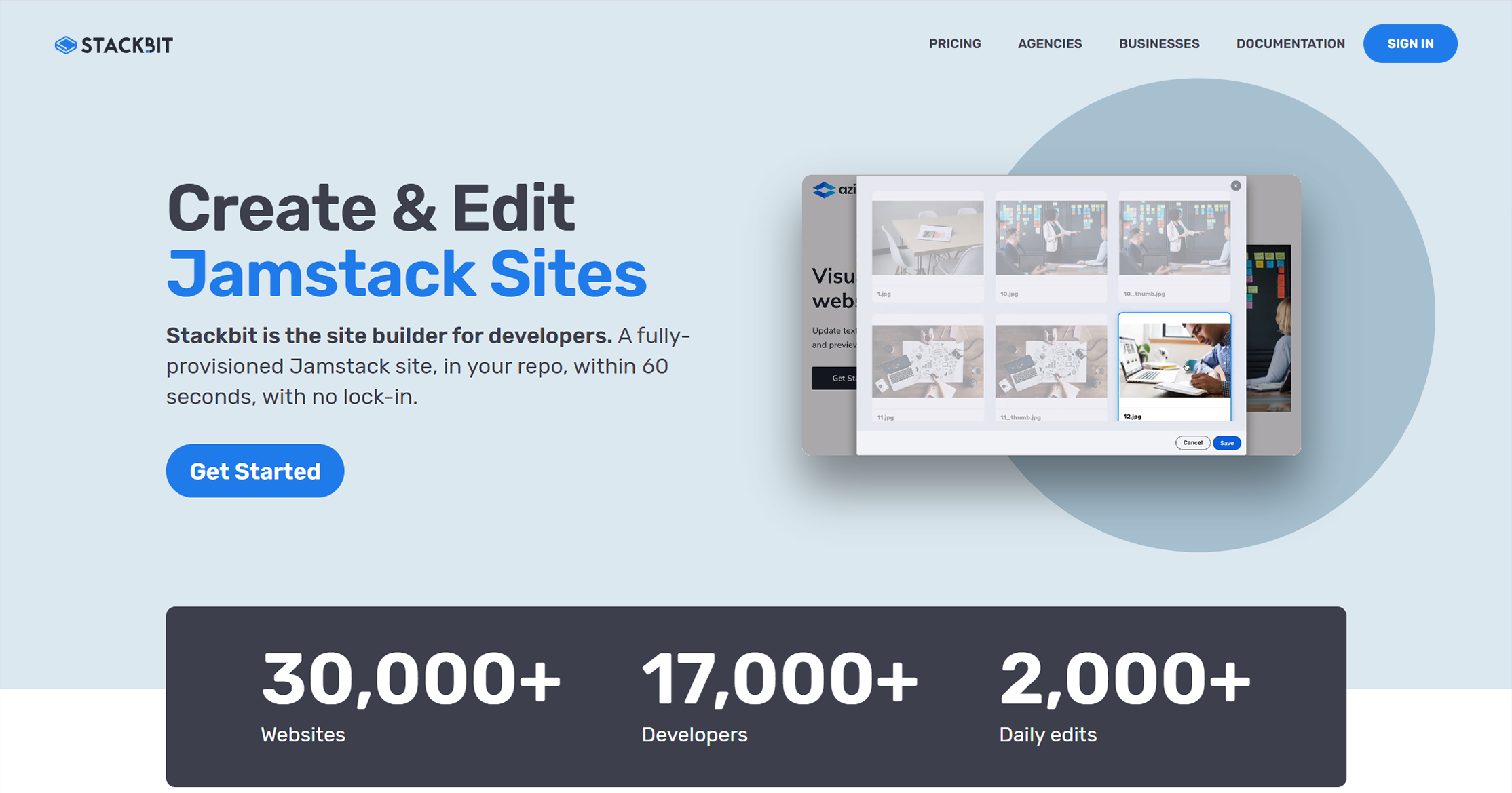
So, you may have heard of Jamstack web dev architecture and static sites, and you are eager to try it but have zero to no coding experience? Go with Stackbit. Even if that first sentence does not resonate with you, give it a try.
Stackbit makes the whole process of creating a static website a lot simpler and more approachable. It takes all the necessary parts ie theme, static site generator, CMS, and deployment solution, mashes them together, and serves you a full-blooded Jamstack website.
It is a cheat tool for building Jamstack websites in a matter of minutes but also a perfect look at the world of Jamstack.
Yes, you can run your eCommerce with Stackbit as well but it requires a bit of coding. The best use case scenario is if you want to host your own static site for your blog, portfolio, presentation, or move away from Medium, and other similar options.
Stackbit has come a long way since the beginning and moved its idea to something more than a simple website builder.
Wix

Wix is a website builder that helps you create your own website, without coding. You’ve most likely heard about Wix since it is a very simple, popular, and well-advertised solution (did anyone said YouTube ads!?).
The pros of Wix are that it has a bunch of template and design options, the hosting service and SEO tools are included and it’s very user-friendly and price-friendly as well with prices starting at $4 per month (actually $8.5 is a better option since the $4 one goes with Wix ads that you can’t manage). It is ideal if you want to get a website up and running quickly and you have zero dev/designer skills but a keen eye and clear idea.
A famously simple drag and drop builder allows users to place elements wherever they like, so you can customize everything visually. You can add various apps to your pages, such as the live chat software, newsletter tool, and many more.
Unfortunately, you can’t switch templates after your website goes live and you are bound by the template design. And in case you plan on moving to another platform keep in mind there is no data export option with Wix. So, you are stuck with Wix unless you have a backup stored somewhere.
Still, for newbies, no coders, MVPs, small businesses, and even small eCommerce stores Wix can be a decent solution.
Squarespace

Similar to Wix with Squarespace, you don’t need any technical knowledge to work with it. Their visual site builder may be a central part of their platform but unlike most of their direct competitors, like Wix, they allow for more customization and code access. It’s mainly used for portfolio sites and blogs, but also online stores.
Squarespace has a very nice selection of free mobile-optimized templates and you can tell that they are very careful about every little detail, such as font and image sizes. If the aesthetic part of the website is very important to you, you will enjoy using this platform.
The prices start at $12 per month, but you can take advantage of the free trial. There is also a Squarespace app that allows you to work on nearly all aspects of your website from your phone which is kind of cool when you have to work on the fly.
While template space is neatly done apps and extensions, on the other hand, are not. Yes, they’ve covered the basic needs but there is no support for third-party apps, plugins, or extensions making announced ease of customization harder than it seemed.
Also, plan a simple website structure i.e. don't go too deep with menu hierarchy.
We Web
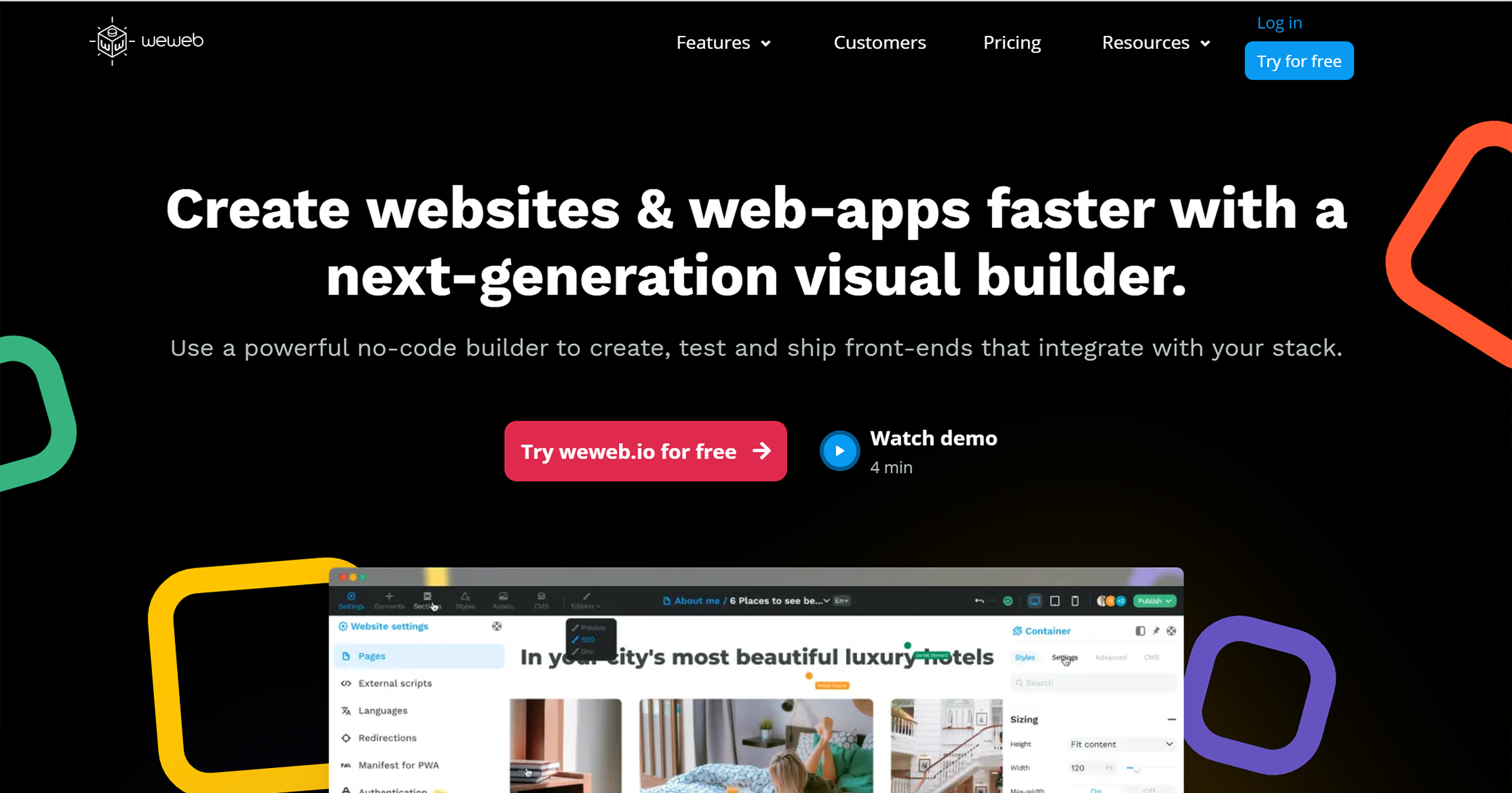
WeWeb is the new kid in town. It is basically a low-code Jamstack website builder and as such an interesting solution. It is equipped with a drag and drop editor to build the front-end and it integrates with GitHub to add your own vue.js / react components if you want.
It also offers integration with headless CMSs and any REST API to fetch and build the front-end with your own data.
Once you hit the publish button a JavaScript application is built from which static files are rendered and deployed on a CDN.
You can use it for free for one project/one domain with hosting for 500 visits per month (whatever that means). The next price tier is $35 per month.
Other options: Weebly, Webflow, The.com
eCommerce WordPress Alternatives
Shopify

Shopify is a platform focused on eCommerce only and people love it because of its stability, flexibility, and wealth of options exclusive to eCommerce businesses. Even if you’re an absolute tech beginner, you won’t have problems getting around it!
It is much more than a simple shopping cart solution for websites. With it, you can run your own store with an unlimited number of items/products, have 24/7 customer service, and complete the order, payment, and shipping management backend. What's more it offers seamless integration with several different social channels including Facebook, Amazon, Pinterest, and certain mobile apps as well. On top of it all, it has a unique feature Shopify “Buy Button” that allows you to embed any product and add a checkout on your website.
Like most website builders you do sacrifice customization ie you are dependent on the theme/template options. However, the number of apps/addons brightest that gap a bit (at least when it comes to added functionalities) though the downside is that most of them will cost you.
If you need to get your shop off the ground in just a few days Shopify may be the best solution indeed. Keep in mind many report problems occur when your startup store, your MVP, starts to grow and you become dependent on paid apps to take care of your problem.
Or you can go with headless Shopify that allows you to get the best of Shopify’s back-end ecommerce functionality with a custom front-end.
Other options: one of these Jamstack ecommerce solutions.
Of course, you can always opt-out for a custom solution. If you have enough dev power within your company choice boils down to the stack most appropriate for your website. Or you can go with an agency, much like Bejamas, to do the job for you.
Free Blogging Platforms
Dev.to
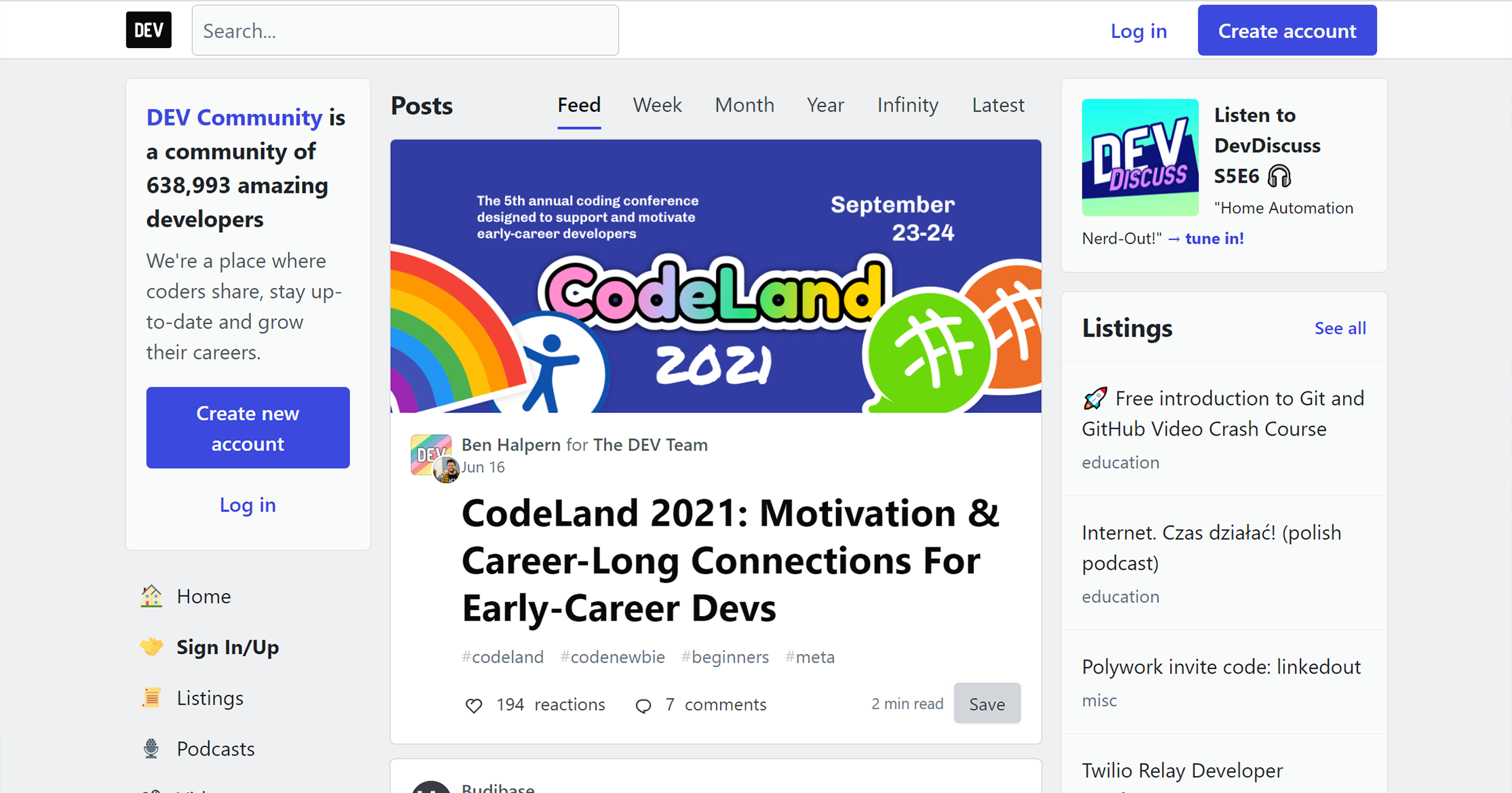
For the sake of simplicity let’s call Dev.to a blogging platform for developers. In reality, it is a community of software developers with a simple goal i.e. to give them a place where they can share their ideas, work, code, and discuss dev topics with like-minded people.
If you are a dev and want to share your work forget Medium. This is the place. It’s free and you can even re-publish your post from anywhere and thanks to the canonical URL option make sure your original post gets the credit while you get the views of Dev.to community.
It’s worth mentioning that you get clean do-follow links on Dev.
Hashnode
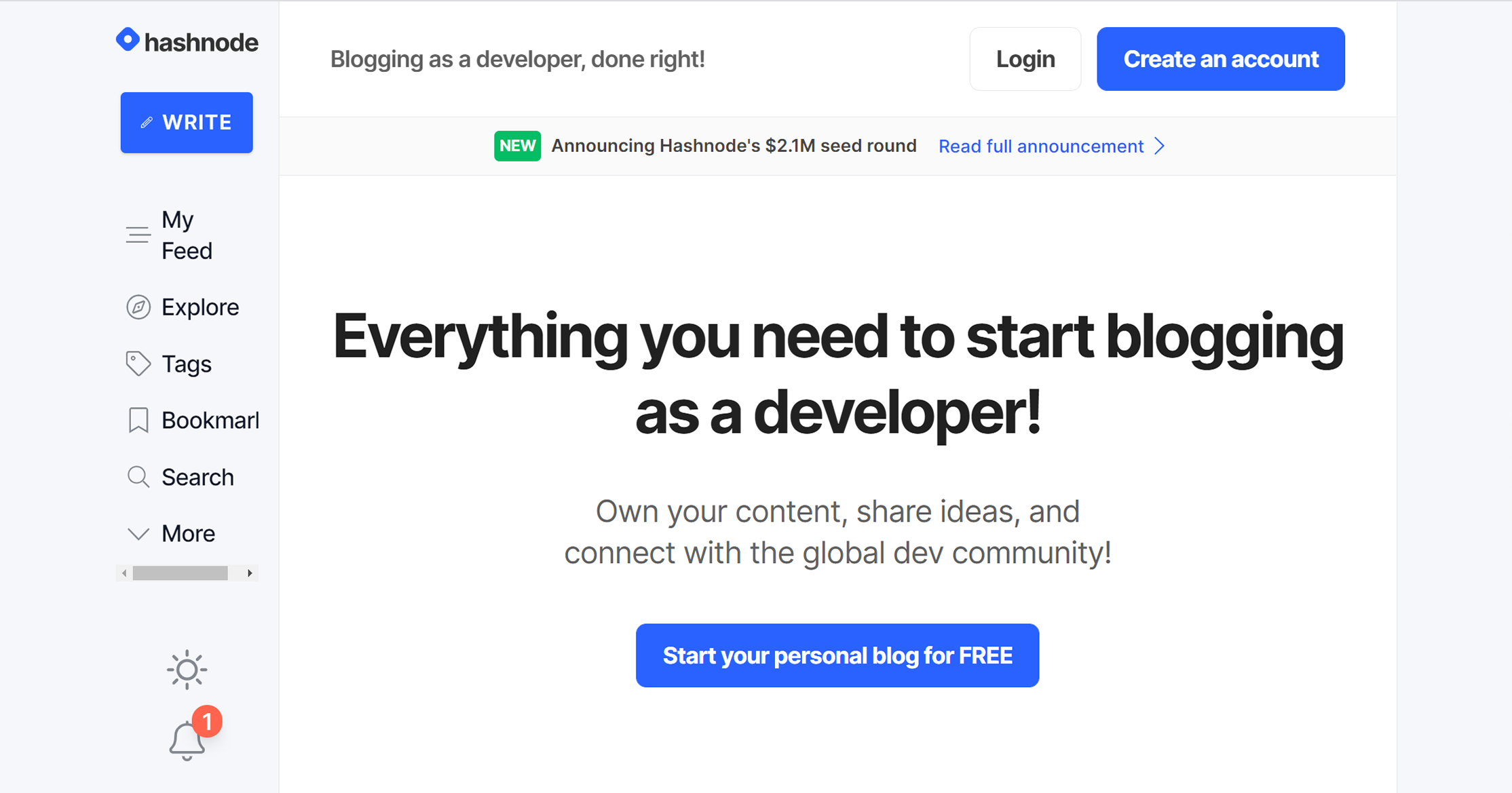
Hashnode is a community where you can discuss your tech concerns and get introduced to so many developers out there. While the concept and targeted audience is somewhat similar to the above, you do have an option to use their platform for a blog on a custom domain and still make use of their canonical URL option as well i.e. reach a new audience without jeopardizing original posts’ chances to show in Google. In my view, it boils down to personal preference.
Medium
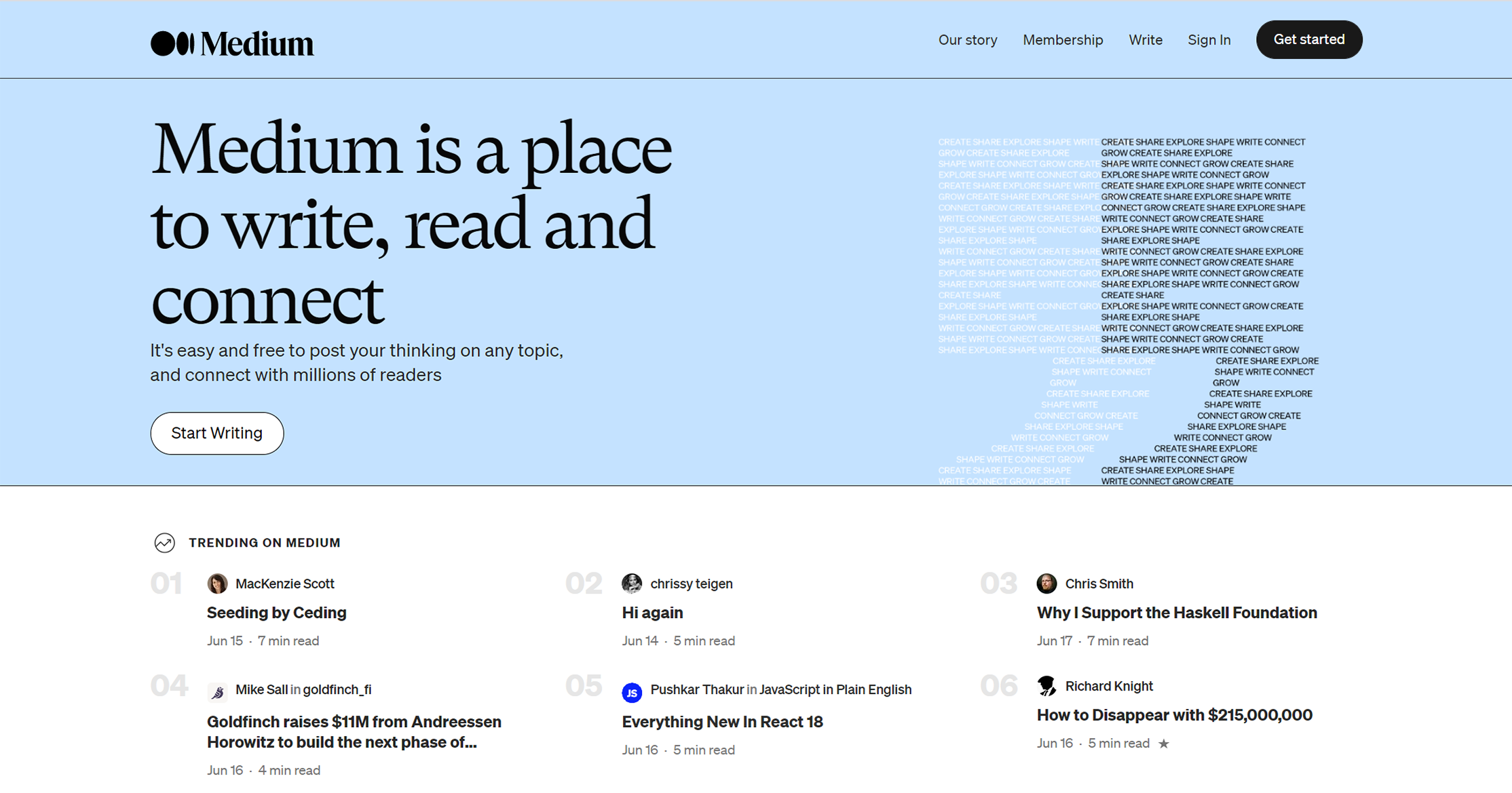
If your main interest is blogging, voicing out, and sharing your views and stories, Medium is a great WordPress alternative. This platform was created specifically for those who want to share stories and other types of content with a community. It has a social networking feature built into it and it figures out which of your Twitter or Facebook connections are on Medium. Then, it connects you there as well.
Medium is known for having a clean, clutter-free look that brings your content to the forefront. It offers feedback on how many people read your stories until the end and how much time visitors spend on your page.
Simple import tools for your content from pretty much anywhere. You can reach a new audience with your writing as Medium shares your writing within its community. You can run your publication or even a company blog there.
Downsides? Although Medium accounts are free and open to anyone (or any brand) to start writing, best writings are usually behind the dreaded 5$ membership. This membership is distributed among writers in certain percent but other than that if you are trying to earn with your writing by serving ads, for example, your in for a letdown as your options are limited to, let's say, direct deals you may be able to pull with someone.
Other options: You might wanna check Able.
Leaving WordPress is Too Hard for You?
Yes, WordPress can be slow/insecure/hard to maintain if done wrong. But that can be said for any other stack as well. With enough dev knowledge, you can make your WordPress work with the best performance numbers.
Headless WordPress
For example, going headless / static with WordPress can help you with performance issues while keeping that well-known and well-loved WordPress editor experience. While there are a couple of out-of-the-box solutions/services that can help you utilize headless WordPress benefits for your business needs you better prepare yourself for some coding sessions as well.
We helped one of our clients, ultra-popular SEO company Backlinkosolution. They wanted to radically improve the UX and speed of the website while retaining that WordPress editing experience. Check out the case study.

So where are we at?
If you don't have enough dev knowledge, or you need a different approach, one of these mentioned in the list can be a better solution.
Web development is not just about the platform or the stack you used. For us, it is answering clients’ and their audience’s wishes and expectations in the best possible way.
Wonder if we can help you out? Let’s get in touch!
CLICK HERE to schedule a 1-on-1 talk and let us show you what we can do for you and your business.